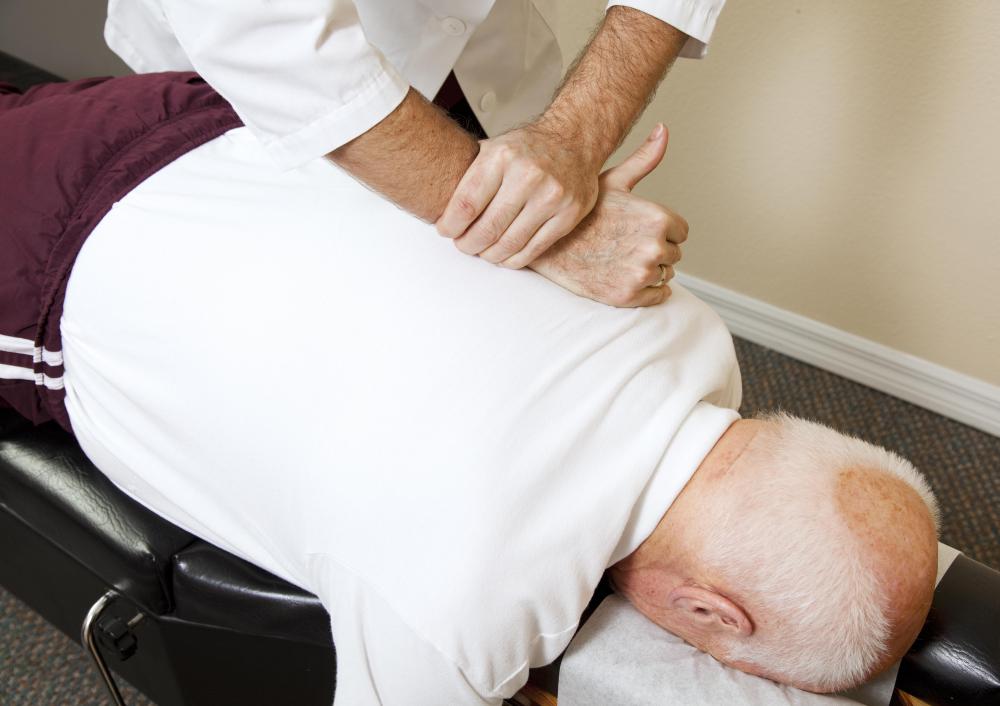At WiseGEEK, we're committed to delivering accurate, trustworthy information. Our expert-authored content is rigorously fact-checked and sourced from credible authorities. Discover how we uphold the highest standards in providing you with reliable knowledge.
What is Neuromuscular Massage Therapy?
Neuromuscular massage therapy, or NMT, is a specialized form of manual therapy or massage that uses mostly static pressure to relieve pain. This form of therapy often concentrates on hyper-irritable spots within a tight muscle or its fascia, the strong connective tissue surrounding muscles, called trigger points. These tender sites can cause pain by shortening the muscle or causing referred pain, which is pain in a location other than the trigger point site.
Neuromuscular massage therapy can also help other problems that may cause pain such as ischemia. Ischemia is a decreased blood supply, often found in areas of tightened muscles. Nerve entrapment or compression is another condition that causes pain, and is caused by pressure to the muscle by tightness. NMT can also help relieve pain and tightness due to things like postural or biomechanical problems in which imbalances in posture or the way we move cause pain.

A neuromuscular massage therapy session can increase circulation to the area affected, break up tightness and adhesions, which is when muscle fibers become fused together, and decrease pain. It can also boost mood by increasing the production of certain chemicals, namely endorphins and serotonin, and increase immunity by allowing immune cells to work more efficiently by assisting in the detoxification process. NMT also can enhance performance by increasing muscle flexibility and proper muscle length, thus increasing such things as stamina and coordination.

Some common techniques of NMT are alternating or prolonged ischemic compression. Alternating ischemic compression is applying direct pressure into the trigger point or knotted area causing pain for eight to ten seconds before releasing momentarily. This causes a rush of blood to the area. Pressure is then reapplied and released until pain is lessened.

Prolonged ischemic compression is slow, constant pressure to the specific area until a release is felt. A release is a softening or melting of the tightened area. Once a release is felt, the massage therapist increases the direct pressure. Each release can take anywhere from a few seconds to one minute. This process is repeated until the pain has diminished.

Other neuromuscular massage therapy techniques include things like skin rolling, where the muscle is “picked up” and rolled the length of the muscle to break up areas of tightness. Muscle stripping is another common technique. This is where slow, often deep strokes are applied to the muscle along its entire length.
Neuromuscular massage therapy should never induce pain, though some discomfort should be expected. When considering any massage technique, you should always consult with your primary care physician, as there are some conditions which are contraindicated. In other words, when in is not advisable to receive massage therapy.
AS FEATURED ON:
AS FEATURED ON:
















Discuss this Article
Post your comments